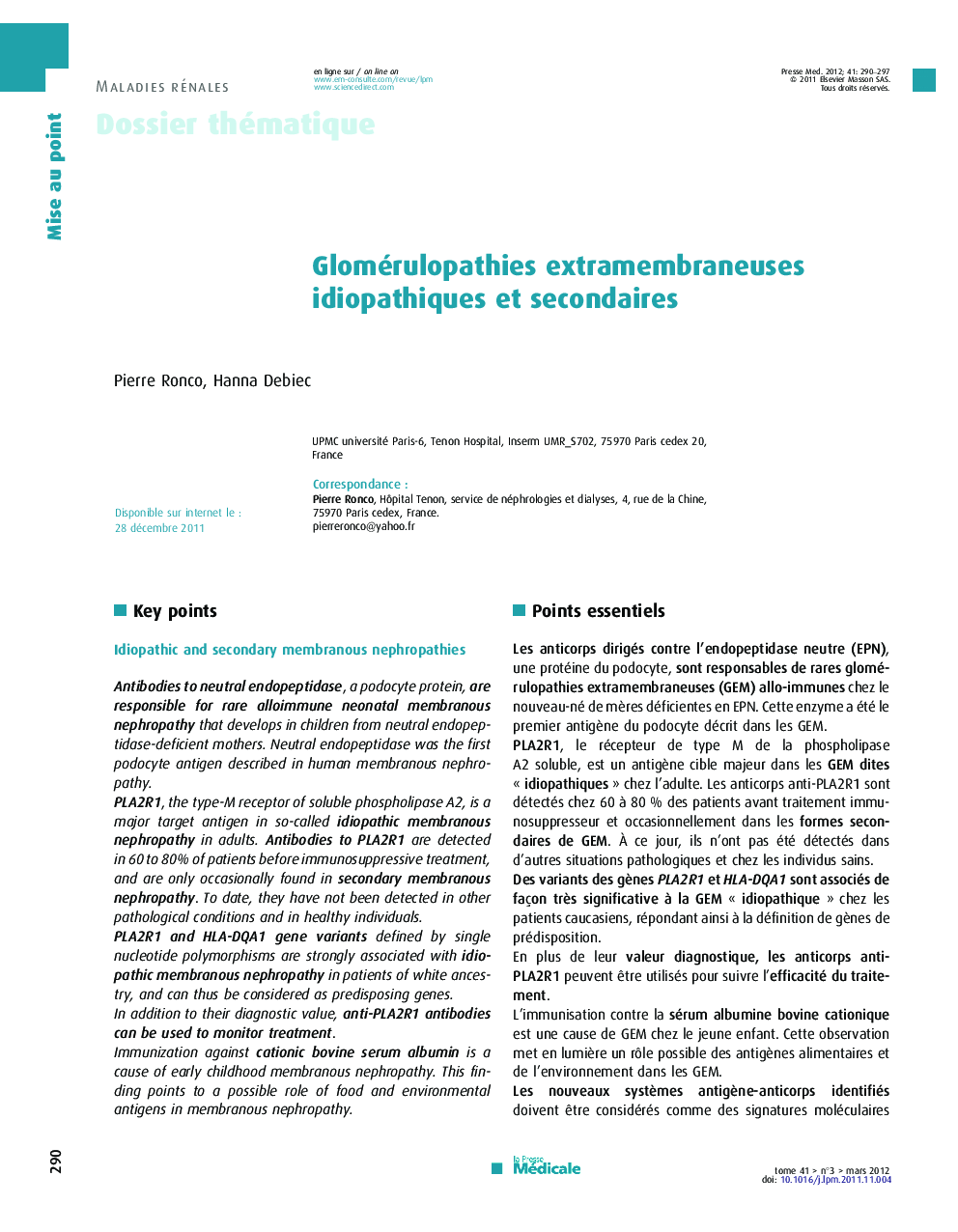| کد مقاله | کد نشریه | سال انتشار | مقاله انگلیسی | نسخه تمام متن |
|---|---|---|---|---|
| 3819962 | 1246461 | 2012 | 8 صفحه PDF | دانلود رایگان |

Key pointsAntibodies to neutral endopeptidase, a podocyte protein, are responsible for rare alloimmune neonatal membranous nephropathy that develops in children from neutral endopeptidase-deficient mothers. Neutral endopeptidase was the first podocyte antigen described in human membranous nephropathy.PLA2R1, the type-M receptor of soluble phospholipase A2, is a major target antigen in so-called idiopathic membranous nephropathy in adults. Antibodies to PLA2R1 are detected in 60 to 80% of patients before immunosuppressive treatment, and are only occasionally found in secondary membranous nephropathy. To date, they have not been detected in other pathological conditions and in healthy individuals.PLA2R1 and HLA-DQA1 gene variants defined by single nucleotide polymorphisms are strongly associated with idiopathic membranous nephropathy in patients of white ancestry, and can thus be considered as predisposing genes.In addition to their diagnostic value, anti-PLA2R1 antibodies can be used to monitor treatment.Immunization against cationic bovine serum albumin is a cause of early childhood membranous nephropathy. This finding points to a possible role of food and environmental antigens in membranous nephropathy.The newly identified antigen-antibody systems should be considered as molecular signatures challenging the uniform histological definition and having a major impact on patient care in a near future.
Points essentielsLes anticorps dirigés contre l’endopeptidase neutre (EPN), une protéine du podocyte, sont responsables de rares glomérulopathies extramembraneuses (GEM) allo-immunes chez le nouveau-né de mères déficientes en EPN. Cette enzyme a été le premier antigène du podocyte décrit dans les GEM.PLA2R1, le récepteur de type M de la phospholipase A2 soluble, est un antigène cible majeur dans les GEM dites « idiopathiques » chez l’adulte. Les anticorps anti-PLA2R1 sont détectés chez 60 à 80 % des patients avant traitement immunosuppresseur et occasionnellement dans les formes secondaires de GEM. À ce jour, ils n’ont pas été détectés dans d’autres situations pathologiques et chez les individus sains.Des variants des gènesPLA2R1 etHLA-DQA1 sont associés de façon très significative à la GEM « idiopathique » chez les patients caucasiens, répondant ainsi à la définition de gènes de prédisposition.En plus de leur valeur diagnostique, les anticorps anti-PLA2R1 peuvent être utilisés pour suivre l’efficacité du traitement.L’immunisation contre la sérum albumine bovine cationique est une cause de GEM chez le jeune enfant. Cette observation met en lumière un rôle possible des antigènes alimentaires et de l’environnement dans les GEM.Les nouveaux systèmes antigène-anticorps identifiés doivent être considérés comme des signatures moléculaires qui remettent en cause la définition histologique uniforme des GEM et auront un impact majeur sur les soins dispensés aux patients dans un avenir proche.
Journal: La Presse Médicale - Volume 41, Issue 3, Part 1, March 2012, Pages 290–297